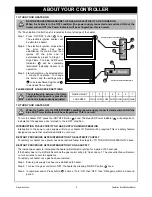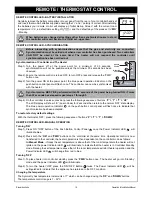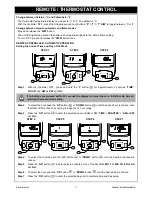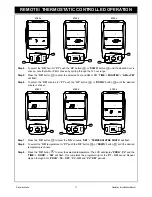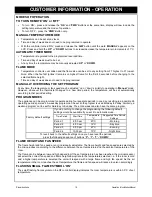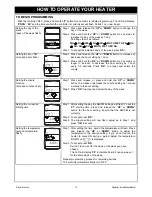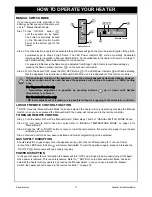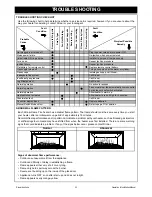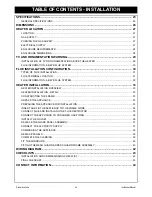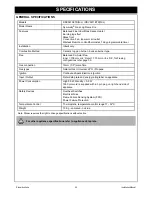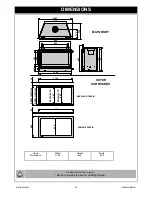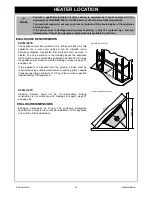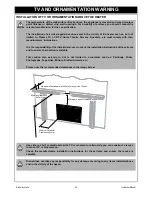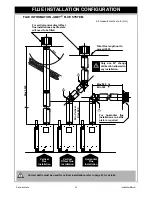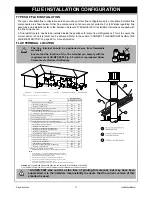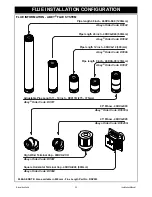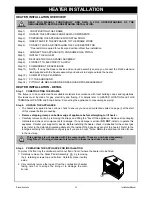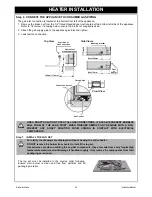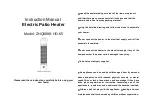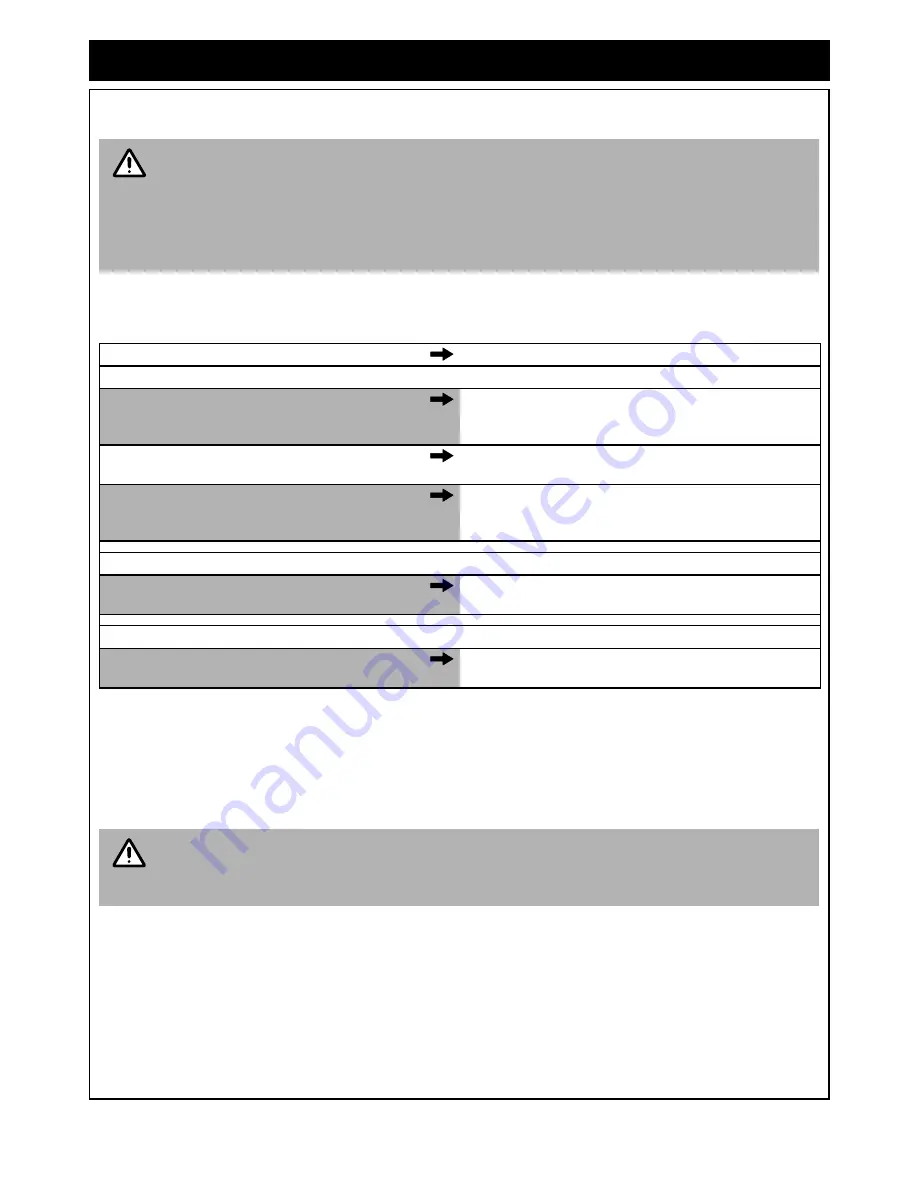
Rinnai Australia
22
Operation & Installation Manual
CARE AND MAINTENANCE
Your heater needs very little maintenance, but the following information will help you to keep it looking good and
working efficiently.
GENERAL OPERATION CHARACTERISTICS
SERVICE
Rinnai recommend that this appliance and installation be inspected and serviced every 2 years or more frequently.
If the power supply cord or any other component of the heater are damaged, they must be replaced by Rinnai or
a suitably qualified person.
Any service or repair work should only be carried out by an authorised person. Rinnai has service and spare parts
departments nationally. See back cover for contact details.
DO NOT attempt to clean the heater while the appliance is hot or operating.
All parts of the heater can be cleaned using a soft, damp cloth.
DO NOT use solvents or abrasives to clean any parts.
DO NOT spray aerosols in the vicinity of the heater whilst in operation.
DO NOT place articles on or against this heater.
DO NOT store flammable materials near this heater.
NOTE: Before asking for a service call please check the following table as these characteristics are part of the
normal operation of the appliance and do not indicate a fault.
CHARACTERISTIC
EXPLANATION
At ignition:
Warm air does not start when the burner lights.
The room fan air is started automatically after a short
delay. This is to allow the heat exchanger to warm up,
helping to avoid cold draughts.
Smoke or strange smells are produced on the first
start up after installation.
This is caused by grease, oil or dust on the heat
exchanger. This will stop after a short time.
Sharp clicking noises at ignition, or when the unit
thermostat modulates to a lower or higher setting,
or shuts down.
This is simply expansion and contraction noise from the
heat exchanger.
During combustion:
Dull clunking noise when the thermostat operates
This is the sound of the solenoid gas valves opening and
closing to regulate the gas flow.
When the appliance is turned off:
Convection fan continues to run after turning
‘OFF’.
This is to remove residual heat from the heat exchanger
and stops once the appliance cools.
Service calls for general cleaning, maintenance and wear and tear are not necessarily covered
under the warranty. Service calls of this nature may be chargeable.
Faults caused by insufficient gas supply, gas quality, installation errors or operation errors are not
covered by the Rinnai warranty. Refer to separate Warranty booklet for details.
IMPORTANT
NOTE

